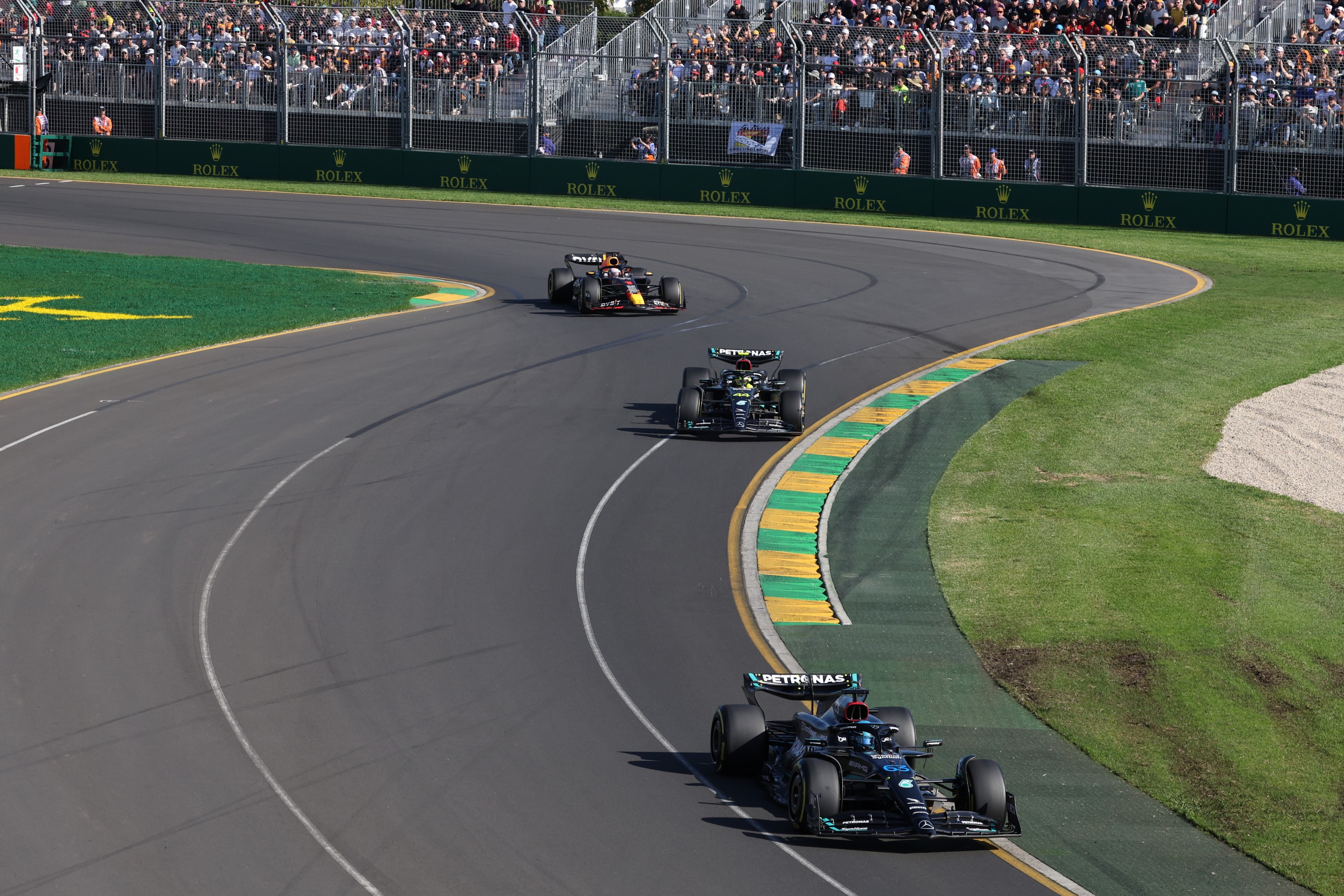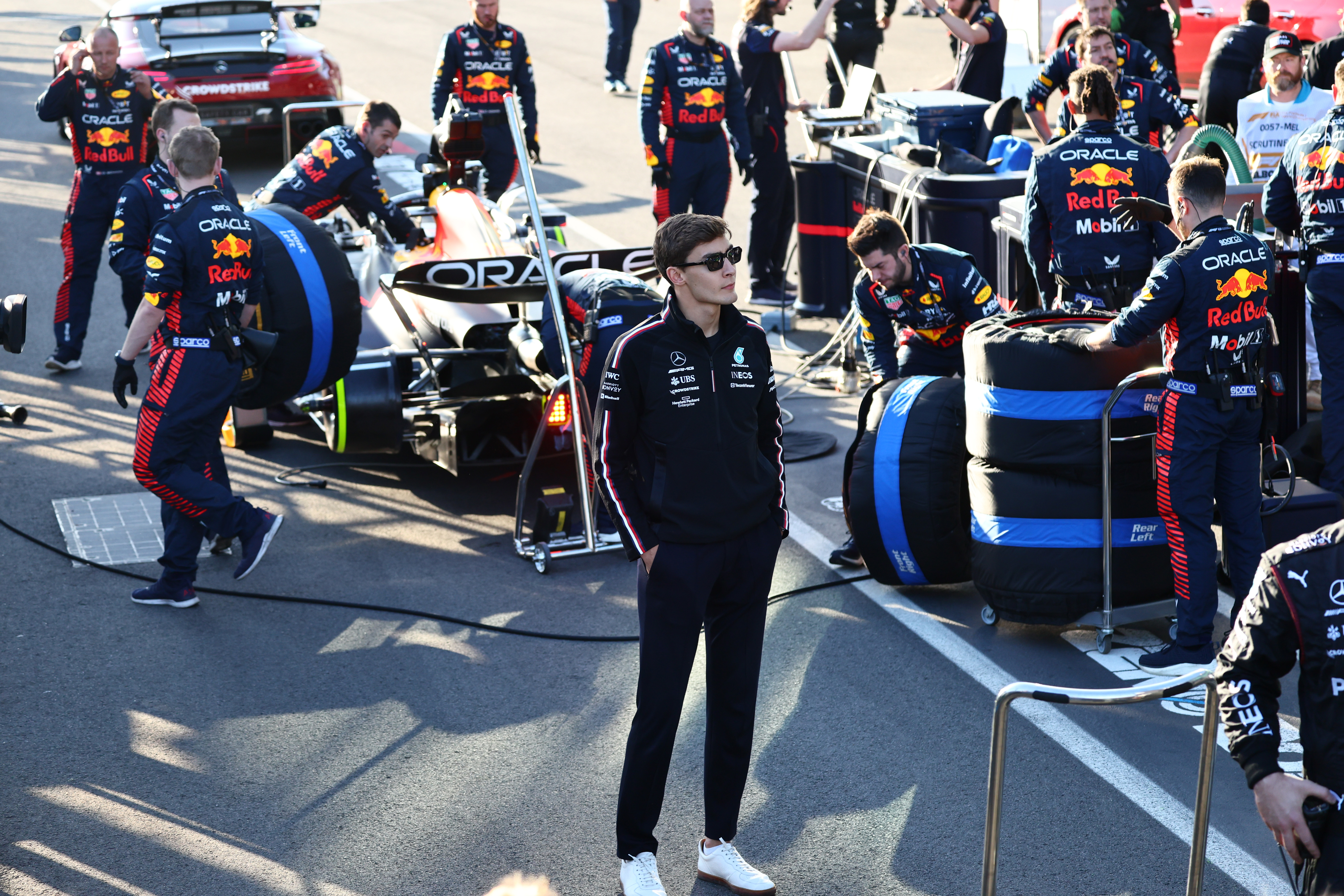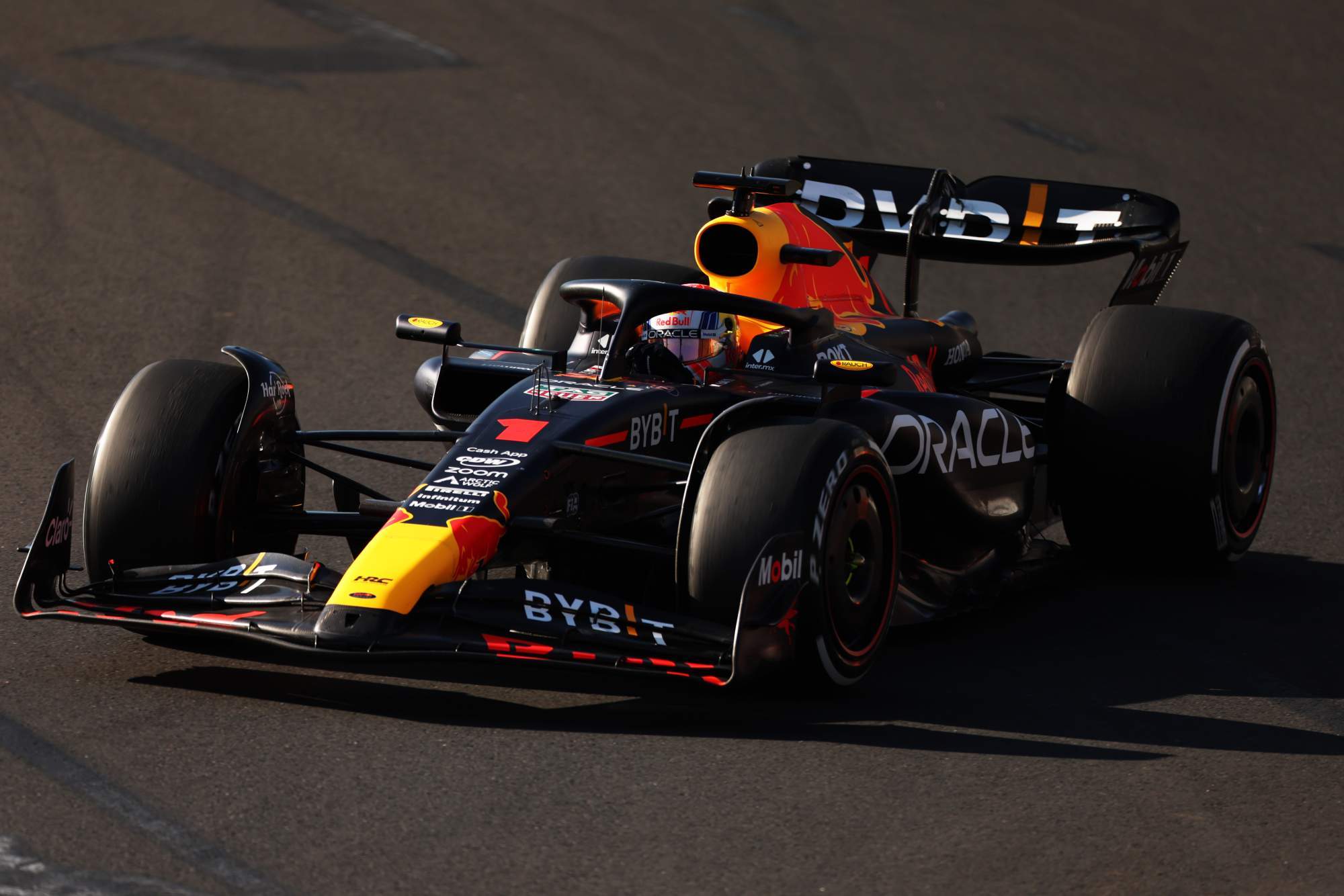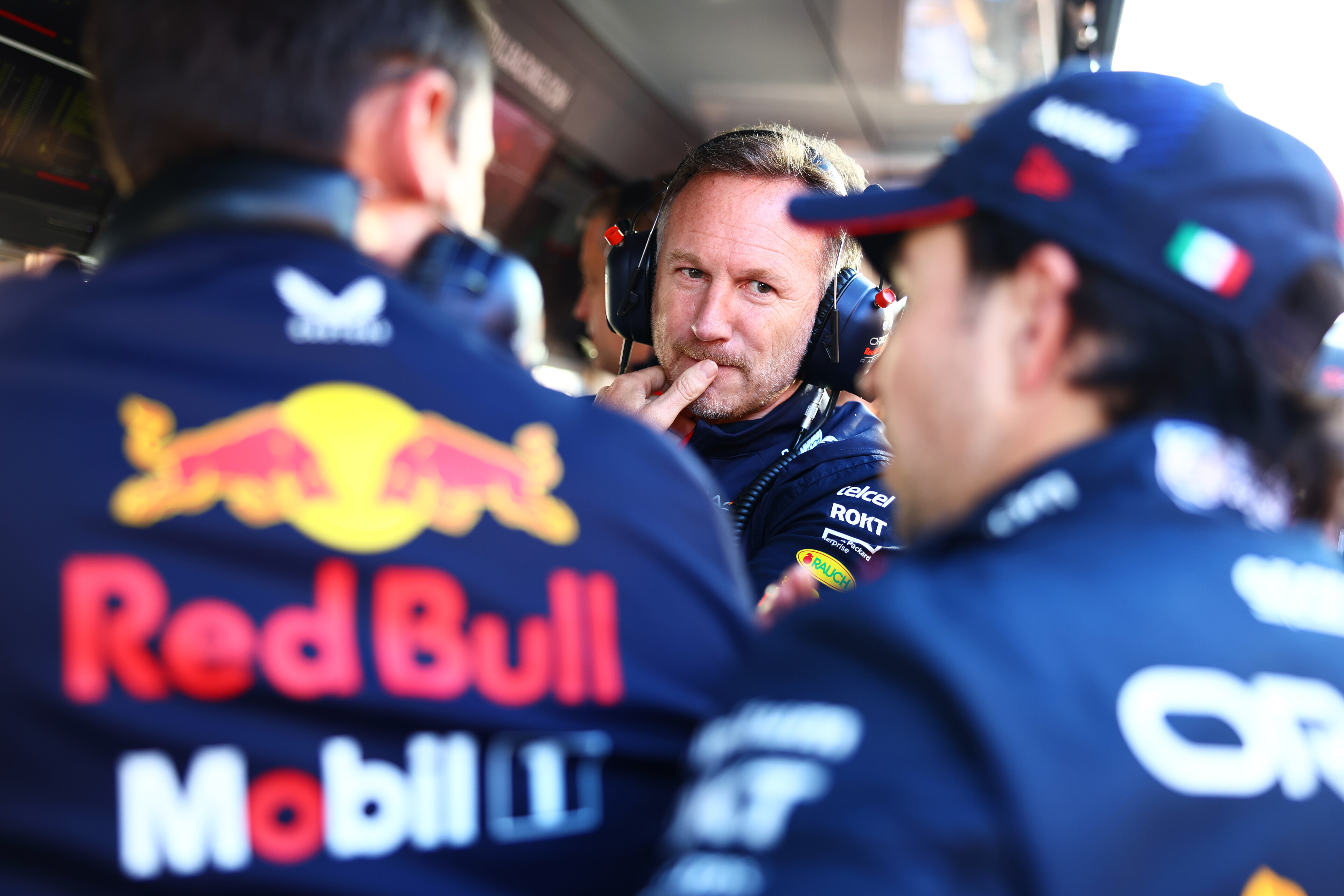Up Next

George Russell reckons Red Bull is holding back its Formula 1 car and is “almost embarrassed” to unleash its full potential, after Max Verstappen continued his team’s 100% winning start to 2023.
Verstappen overcame a poor first lap in the Australian Grand Prix that dropped him behind the two Mercedes cars of Russell and Lewis Hamilton to score his second victory of the season.
Russell led early on but was removed from contention after pitting during a safety car period that turned into an ill-timed red flag, which left Hamilton leading Verstappen at the restart.
But, in Hamilton’s words, Verstappen came “sailing by” with ease – the latest display of straightline speed advantage that Mercedes boss Toto Wolff called “mind-boggling” – and showed a frightening turn of pace to turn a 0.5-second deficit one lap into a 2.1s advantage the next.

“For sure they’re holding back,” Russell told BBC Radio 5 Live.
“They’re almost embarrassed to show their full potential because the faster they seem globally the more the sport is going to try to hold them back somehow.
“Realistically, they probably have seven tenths’ advantage over the rest of the field.
“I don’t know what the pace difference looks like at the moment but Max has got no reason to be pushing and nor has Red Bull.
“They have done a really great job, we can’t take that away and we clearly have to up our game.”

Red Bull team boss Christian Horner said the way Verstappen built his lead instantly was exaggerated by a Hamilton mistake.
But it was clear, as in the first two races, that the RB19 can display a much bigger advantage in the grand prix than it shows in qualifying.
There were different signs of this in Melbourne, where Verstappen had only qualified on pole by a couple of tenths.
His unusually conservative opening lap, for example, was partly a result of knowing “losing one or two spots was not the end of the world” because “I knew that we had a quick car”.
The two laps after passing Hamilton offered a big glimpse of how much pace Verstappen held in reserve – they were 0.5s and 0.75s quicker respectively – and suddenly his opponent was at arm’s length, and Verstappen was in cruise control.
And after a mid-race virtual safety car period, he pulled away by around four tenths a lap on average as he moved 11 seconds clear of the battle for second, a gap that was only cut into by a mistake under braking at the penultimate corner that sent the Red Bull briefly off-track.
Verstappen had no interest in pushing on the hard tyre – he just wanted to manage it to the end because of the uncertainty brought by rain-disrupted long runs on Friday.

It had echoes of Bahrain, where it transpired the Red Bulls had pace-managed massively amid reliability scares – the task was simply to build a decent cushion, nothing more. Still, Horner had no time for Russell’s suggestions of sandbagging.
“That’s very generous of him,” Horner countered. “He’d know too well from his team about those kinds of advantages.
“There’s always an element of management that goes on in any race. Because it was a one-stop race and a very early one-stop race, of course there was an element of tyre management going on.”
Evidently, Red Bull’s car is weighted towards the race, not qualifying. This could be one of myriad reasons for the advantage seen on Sundays, with others being energy deployment (which remains free to adjust), tyre usage, rivals struggling in dirty air – and, yes, even Red Bull’s drivers keeping a little in reserve because it’s simply not necessary to drive at 100% every lap at the moment.
Horner pointed to the efforts of the other Red Bull of Sergio Perez, trying to make his way through the field after a qualifying crash and a pitlane start, as evidence the RB19 did not have as grand an advantage as made out.

“Checo wasn’t hanging about and he wasn’t holding back seven tenths a lap just because he didn’t want to show it,” said Horner.
Perez was obviously contained by the reality of starting so far back on a track that is quite tricky to pass on, even with an advantage like Red Bull’s, and that compresses the field because it is a short lap with few real corners. It was true, however, that even in clean air it seemed to take him longer than expected to make progress – with Perez needing 19 laps mid-race to eradicate a gap of only 5.4 seconds to Lando Norris and overtake the McLaren.
But Perez was also just not comfortable in the RB19 throughout the weekend, and it seems the likelier explanation that his performance was simply well adrift of what the car was really capable of.
Returning to Russell’s point, it would not be the first time in F1 history a team has been wary of letting on just how far in front it is.
Mercedes has admitted to doing exactly that in 2014, for fear of a complete overreaction to its performance at the start of new rules and some enforced changes as a result.
That was not an irrational reaction, especially as it’s not exactly unheard of for F1’s stakeholders to change the rules to try to break dominance. Likewise, it would not be a huge surprise if Red Bull is being prudent to some degree.
In all likelihood, though, it’s not that Red Bull is “embarrassed” to show its full performance. It just hasn’t been needed that often.





